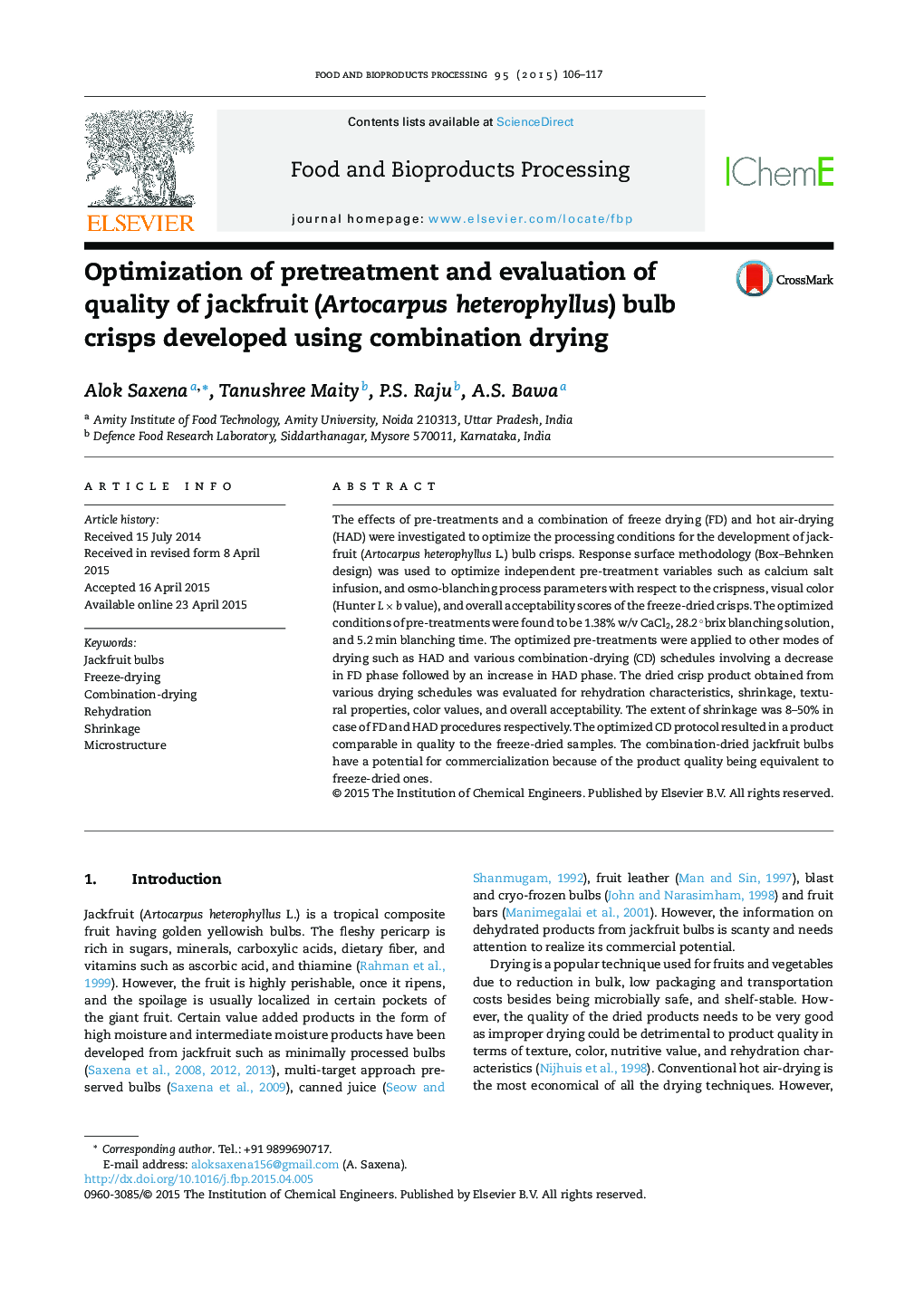| Article ID | Journal | Published Year | Pages | File Type |
|---|---|---|---|---|
| 19008 | Food and Bioproducts Processing | 2015 | 12 Pages |
•Effect of combination-drying on quality of pretreated jackfruit bulb crisp was evaluated.•Pretreatment variables were optimized using response surface methodology.•Quality of crisps was found to be affected by various freeze and hot air drying combinations.•SEM micrograph showed restricted shrinkage in case of optimized combination drying protocol.
The effects of pre-treatments and a combination of freeze drying (FD) and hot air-drying (HAD) were investigated to optimize the processing conditions for the development of jackfruit (Artocarpus heterophyllus L.) bulb crisps. Response surface methodology (Box–Behnken design) was used to optimize independent pre-treatment variables such as calcium salt infusion, and osmo-blanching process parameters with respect to the crispness, visual color (Hunter L × b value), and overall acceptability scores of the freeze-dried crisps. The optimized conditions of pre-treatments were found to be 1.38% w/v CaCl2, 28.2 °brix blanching solution, and 5.2 min blanching time. The optimized pre-treatments were applied to other modes of drying such as HAD and various combination-drying (CD) schedules involving a decrease in FD phase followed by an increase in HAD phase. The dried crisp product obtained from various drying schedules was evaluated for rehydration characteristics, shrinkage, textural properties, color values, and overall acceptability. The extent of shrinkage was 8–50% in case of FD and HAD procedures respectively. The optimized CD protocol resulted in a product comparable in quality to the freeze-dried samples. The combination-dried jackfruit bulbs have a potential for commercialization because of the product quality being equivalent to freeze-dried ones.
